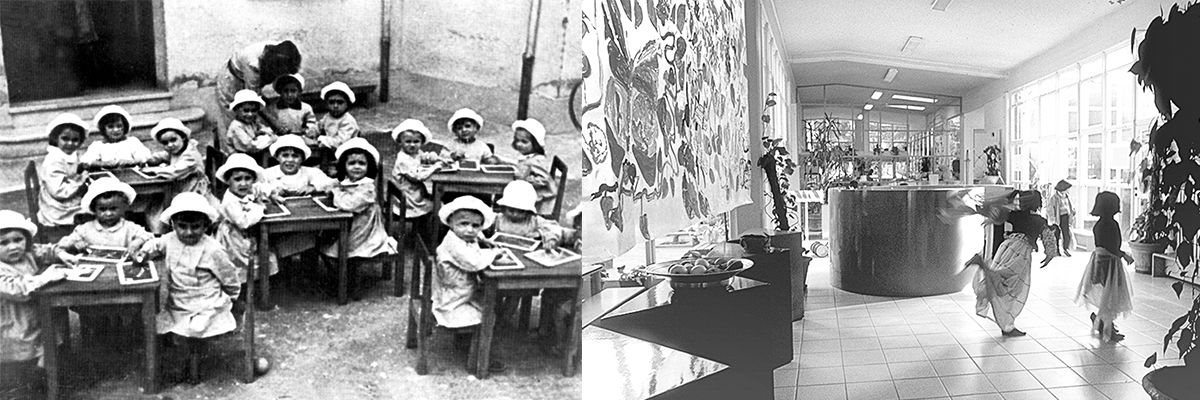By Andrew Loh, Dec 2006
Hailed as the best preschool in the world by Newsweek magazine in 1991, the Reggio Emilia approach to early childhood education has attracted the worldwide attention of educators, researchers, and just about anyone interested in early childhood education best practices. Even the National Association for the Education of Young Children (NAEYC)’s revised version of developmentally appropriate practices (DAP) guidelines also included examples from the Reggio approach. Today, the Reggio approach has been adopted in the USA, UK, New Zealand, Australia, and many other countries.
Loris Malaguzzi (1920-1994) founded the ‘Reggio Emilia’ approach in a city in northern Italy called Reggio Emilia. The ‘Reggio’ approach was developed for municipal child-care and education programs serving children below six. The approach requires children to be seen as competent, resourceful, curious, imaginative, inventive, and possess a desire to interact and communicate with others.
The ‘Reggio’ vision of the child as a competent learner has produced a strong child-directed curriculum model. The curriculum has purposive progression but not scope and sequence. Teachers follow the children’s interests and do not provide focused instruction in reading and writing. Reggio’s approach has a strong belief that children learn through interaction with others, including parents, staff, and peers in a friendly learning environment.
Here are some key features of Reggio Emilia’s early childhood program
The Role of the Environment as a Teacher
Within the Reggio Emilia schools, the educators are very concerned about what their school environments teach children. Hence, great attention is given to the look and feel of the classroom. It is often referring to the environment as the “third teacher”.
The aesthetic beauty within the schools is seen as an important part of respecting the child and their learning environment
A Classroom Atmosphere of Playfulness and Joy Pervades
Teachers organize environments rich in possibilities and provocations that invite the children to undertake extended exploration and problem-solving, often in small groups, where cooperation and disputation mingle pleasurably.
Documentation of children’s work, plants, and collections that children have made from former outings are displayed both at the children’s and adults’ eye level.
Common space available to all children in the school includes dramatic play areas and work tables for children from different classrooms to come together.
Children’s Multiple Symbolic Languages
Using the arts as a symbolic language through which to express their understanding in their project work.
Consistent with Dr. Howard Gardner’s notion of schooling for multiple intelligences, the Reggio approach calls for the integration of the graphic arts as tools for cognitive, linguistic, and social development.
Presentation of concepts and hypotheses in multiple forms such as print, art, construction, drama, music, puppetry, and shadow play. These are viewed as essential to children’s understanding of experience.
Documentation as Assessment and Advocacy
Documenting and displaying the children’s project work is necessary for children to express, revisit, construct, and reconstruct their feelings, ideas, and understandings. Similar to the portfolio approach, documentation of children’s work in progress is viewed as an important tool in the learning process for children, teachers, and parents.
Pictures of children engaged in experiences, their words as they discuss what they are doing, feeling, and thinking, and the children’s interpretation of experience through the visual media are displayed as a graphic presentation of the dynamics of learning.
Teachers act as recorders (documenters) for the children, helping them trace and revisit their words and actions and thereby making the learning visible.
Long-term Projects
Supporting and enriching children’s learning through in-depth, short-term (one week), and long-term (throughout the school year) project work, in which responding, recording, playing, exploring, hypothesis building and testing, and provoking occurs.
Projects are child-centered, following their interest, and returning again and again to add new insights.
Throughout a project, teachers help children make decisions about the direction of study, how the group will research the topic, and the representational medium that will demonstrate and showcase the topic.
The Teacher as Researcher
The teacher’s role within the Reggio Emilia approach is complex. Working as co-teachers, the role of the teacher is first and foremost to be that of a learner alongside the children. The teacher is a teacher-researcher, a resource, and a guide as she/he lends expertise to children. Within such a teacher-researcher role, educators carefully listen, observe, and document children’s work and the growth of community in their classroom and are to provoke and stimulate thinking.
Teachers are committed to reflecting on their own teaching and learning.
Classroom teachers work in pairs and collaborate, sharing information and mentoring between personnel.
Home-school Relationships
Children, teachers, parents, and the community are interactive and work together. Building a community of inquiry between adults and children.
Communication and interaction can deepen children’s inquiry and theory-building about the world around them
Programs in Reggio are family-centered. Loris’s vision of an “education based on relationships” focuses on each child about others and seeks to activate and support children’s reciprocal relationships with other children, family, teachers, society, and the environment.
Reggio’s approach is not a formal model with defined methods (such as Waldorf and Montessori), teacher certification standards, and accreditation processes. Rather, the educators in Reggio Emilia speak of their evolving “experience” and see themselves as a provocation and reference point, a way of engaging in dialogue starting from a strong and rich vision of the child. In all of these settings, documentation was explored as a means of promoting parent and teacher understanding of children’s learning and development.
While this article concentrates on Reggio Emilia’s approach to early childhood education, it does not play down the other approaches such as Waldorf and Montessori. Each approach has its strengths and weaknesses as well as areas of difference.
What makes the Reggio Emilia approach stand out? In a nutshell, Reggio’s approach articulates that children acquire skills of critical thinking and collaboration.



